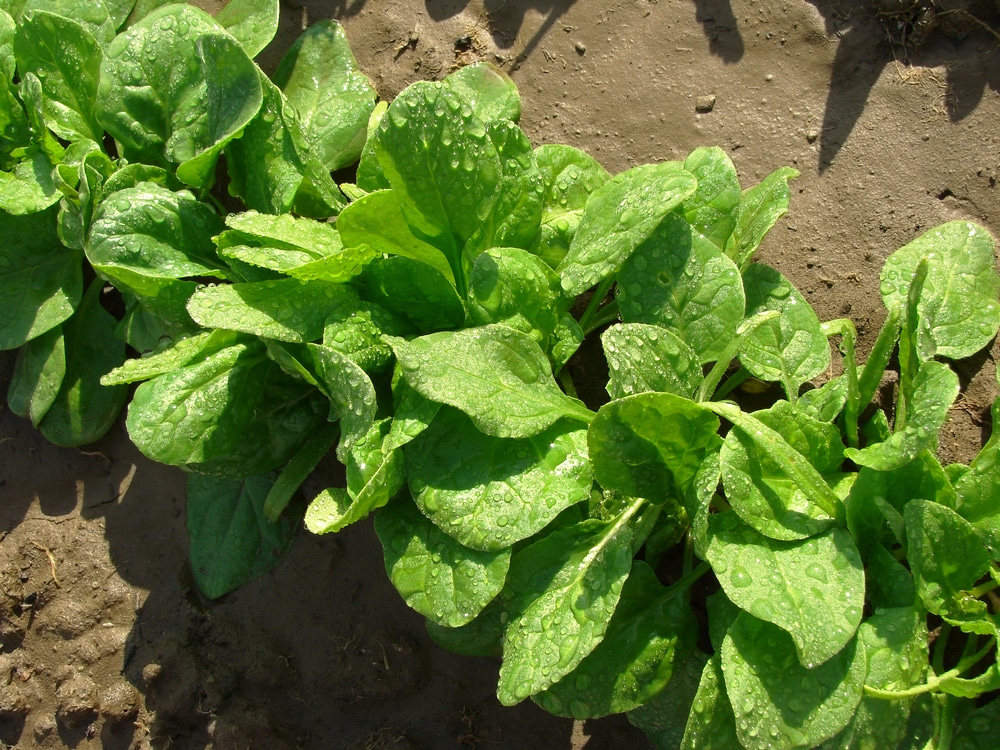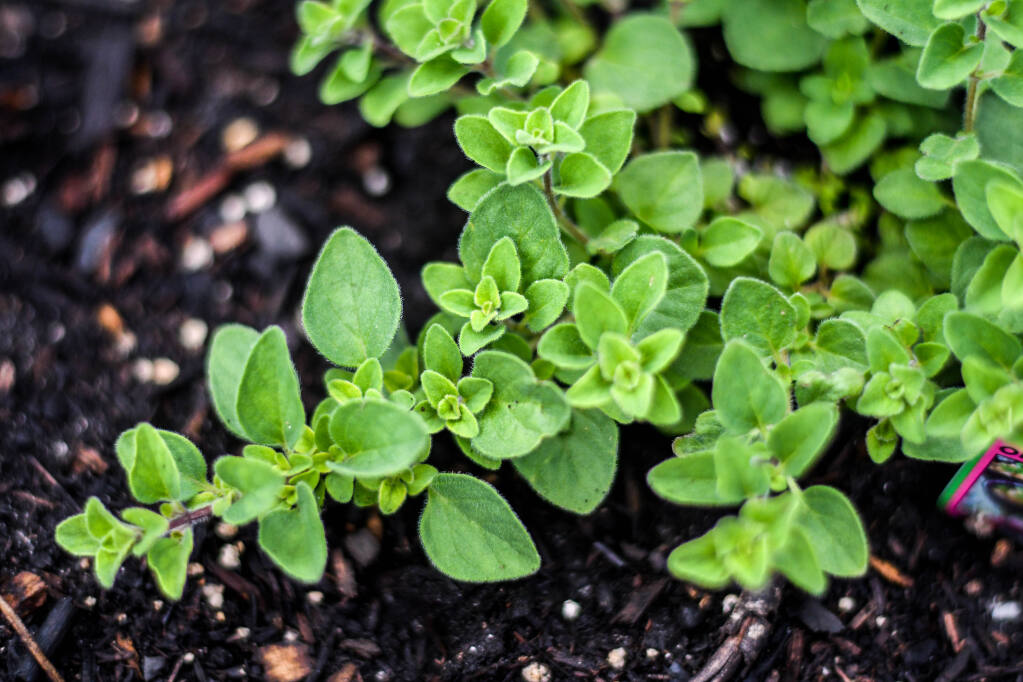- March 18, 2024

Companion planting for spinach is an experience-based observation developed over centuries. People have noticed that planting certain plants side by side has a positive effect on each other, increasing the quality and quantity of the harvest. Companion planting is not set in stone and it is the least you can do for your plants. You can get the right care from the individual plant article. You can see the companion and the enemy plants of spinach below.
| Companion plants for spinach | Enemy plants of spinach |
|---|---|
| Eggplant | Fennel |
| Oregano | Potato |
| Pea | Dill |
| Rosemary | Sunflower |
| Strawberry | |
| Cabbage | |
| Radish | |
| Lettuce | |
| Cilantro | |
| Broccoli | |
| Nasturtiums | |
| Kale | |
| Garlic | |
| Tomato | |
| Carrot | |
| Marigold | |
| Onion | |
| Borage | |
| Cucumber | |
| Squash |
Why does companion planting work?
Companion planting works due to several interconnected factors:
Pest Control: Certain plants emit natural chemicals or scents that repel pests, effectively acting as natural pest deterrents for nearby plants. This reduces the need for chemical pesticides and fosters a more balanced ecosystem.
Attracting Beneficial Insects: Some companion plants attract beneficial insects like ladybugs, hoverflies, and predatory wasps, which feed on common garden pests. This creates a natural form of pest control and helps maintain ecological balance.
Soil Improvement: Different plants have varying root structures and nutrient requirements. Companion planting can enhance soil health by reducing soil erosion, suppressing weeds, and improving nutrient uptake. For example, leguminous plants fix nitrogen in the soil, benefiting neighboring plants that require nitrogen for growth.
Competition Reduction: Companion planting can help reduce competition for resources such as water, sunlight, and nutrients by utilizing plants with complementary growth patterns and root structures. This allows for more efficient resource utilization and healthier plant growth.
Biodiversity and Resilience: Planting diverse species together increases biodiversity in the garden, which can enhance ecosystem resilience. A diverse ecosystem is better equipped to withstand pests, diseases, and environmental stresses compared to monocultures.
Maximizing Space: Companion planting allows gardeners to make the most of limited space by intercropping plants with different growth habits and maturity rates. This maximizes yield per square foot and promotes efficient land use.
Overall, companion planting capitalizes on the natural synergies between plant species, creating a thriving and sustainable garden ecosystem.
What are the companion plants of spinach?
The following plants have positive effects on the growth of your spinach. These plants can repel pests that damage your plants. These plants provide increased nutrition to the soil that your plants can use. Therefore, we recommend planting these plants next to your spinach.

Eggplant
Eggplant thrives in well-drained, loamy soil under the nurturing warmth of sunlight. Flourishing in fertile earth enriched with organic matter, it embodies resilience and grandeur. Consistent moisture and adequate spacing support robust growth and prolific fruiting. Eggplant provides general benefits to neighboring plants by shading the soil, reducing weed growth, and promoting overall garden health.

Oregano
Oregano grows in diverse soil conditions. Flourishing in well-drained, sandy or loamy soil with a pH range between 6.0 and 8.0. Full sunlight and occasional pruning nurture its flavorful foliage and compact growth. Oregano offers invaluable benefits to neighboring plants by repelling pests, attracting pollinators, and enhancing overall garden biodiversity.

Pea
Peas thrive in diverse soil conditions. Flourishing in well-drained, fertile soil with a pH range between 6.0 and 7.5, they embody adaptability and vigor. Full sunlight and consistent moisture nurture their lush foliage and prolific growth. Peas provide invaluable benefits to neighboring plants by fixing nitrogen in the soil, enhancing fertility, and promoting overall garden health.

Rosemary
Rosemary flourishes in well-drained, sandy soil with a pH range between 6.0 and 7.0. Full sunlight and moderate moisture nurture its aromatic foliage and robust growth. Rosemary provides invaluable benefits to neighboring plants by repelling pests, attracting beneficial insects, and enhancing overall garden biodiversity.

Strawberry
Strawberries grow in loamy soil with a pH range between 5.5 and 6.5. Full sunlight and consistent moisture nurture their delicate fruits and lush foliage. Strawberries provide invaluable benefits to neighboring plants by attracting pollinators, suppressing weed growth with their dense foliage.

Cabbage
Cabbage thrives in various soil conditions. Flourishing in well-drained soil enriched with compost, it adapts to pH levels ranging from slightly acidic to neutral. Adequate moisture and sunlight foster robust growth and ample foliage. Belonging to the Brassicaceae family, alongside esteemed companions like kale and Brussels sprouts, cabbage epitomizes the culinary versatility and natural elegance found within the garden's domain.

Radish
Radishes thrive in loose soil with a pH range between 5.5 and 7.0, they embody adaptability and zest. Full sunlight and consistent moisture nurture their rapid growth and vibrant foliage. Radishes provide invaluable benefits to neighboring plants by breaking up compacted soil, improving soil aeration, and suppressing pest populations.

Lettuce
Lettuce, known for its crunchy leaves and garden appeal, thrives in various soil conditions. Flourishing in well-drained, fertile soil with a pH range between 6.0 and 7.0. Partial shade and consistent moisture nurture its tender foliage and compact heads. Lettuce offers invaluable benefits to neighboring plants by providing ground cover, conserving soil moisture, and suppressing weed growth.

Cilantro
Coriander thrives in various soil conditions. Flourishing in well-drained, fertile soil enriched with organic matter, it embodies adaptability and aroma. Adequate moisture and sunlight support lush growth and abundant foliage. Coriander extends general benefits to neighboring plants by attracting beneficial insects and enhancing overall garden biodiversity.

Broccoli
Broccoli flourishes in diverse growing conditions. Thriving in well-drained soil enriched with organic matter, it adapts to pH levels ranging from slightly acidic to neutral. Adequate moisture and sunlight support vigorous growth and abundant yields. Belonging to the Brassicaceae family, alongside esteemed companions like kale and cabbage, broccoli embodies the natural abundance and beauty found within the garden's embrace.

Nasturtiums
Nasturtiums thrive in various soil conditions. Flourishing in well-drained, moderately fertile soil with a pH range between 6.0 and 7.0. Full sunlight and consistent moisture nurture their vibrant flowers and trailing foliage. Nasturtiums offer invaluable benefits to neighboring plants by attracting pollinators, repelling pests, and adding a touch of vibrant color to garden landscapes.

Kale
Kale, known for its robust leaves and garden vigor, thrives in various soil conditions. Flourishing in well-drained, nutrient-rich soil with a pH range between 6.0 and 7.5. Partial shade and consistent moisture nurture its vibrant foliage and sturdy stems. Kale provides invaluable benefits to neighboring plants by enriching the soil with nutrients, suppressing weeds, and attracting beneficial insects like ladybugs and lacewings.

Garlic
Garlic flourishes in well-drained, fertile soil with a pH range between 6.0 and 7.5, it embodies adaptability and strength. Adequate sunlight and consistent moisture support robust growth and bulb development. Garlic provides invaluable benefits to neighboring plants by deterring pests with its strong aroma and acting as a natural fungicide against soil-borne diseases.

Tomato
Tomatoes thrive in various soil conditions. Flourishing fertile soil with a pH range between 6.0 and 7.0. Full sunlight and consistent moisture nurture their sprawling vines and abundant fruiting. Tomatoes provide invaluable benefits to neighboring plants by attracting pollinators, suppressing weed growth with their dense foliage, and adding richness to culinary dishes.

Carrot
Carrots thrives in well-drained, loose soil enriched with organic matter. Adequate moisture and sunlight support robust root growth and vibrant foliage. Carrots offer general benefits to neighboring plants by improving soil structure with their deep taproots, enhancing soil aeration, and creating pathways for water and nutrients to reach other plant roots.

Marigold
Marigold flourishes in well-drained, loamy soil with a pH range between 6.0 and 7.0. Full sunlight and consistent moisture nurture its colorful flowers and aromatic foliage. Marigold provides invaluable benefits to neighboring plants by repelling pests, attracting pollinators like bees and butterflies, and enhancing overall garden biodiversity.

Onion
Onions thrive in various soil conditions. Flourishing in well-drained, fertile soil—preferably loamy or sandy—with a pH range between 6.0 and 7.0. Partial sunlight and consistent moisture nurture their hearty foliage and bulb formation. Onions provide invaluable benefits to neighboring plants by deterring pests with their strong aroma and improving soil structure with their fibrous roots.

Borage
Borage, esteemed for its herbal charm and botanical grandeur, thrives in diverse habitats under the sun's warm embrace. Flourishing in well-drained soil with a neutral to alkaline pH, it showcases resilience and adaptability. Regular watering and adequate spacing promote lush foliage and vibrant blooms, attracting pollinators and beneficial insects.

Cucumber
Cucumbers thrive in diverse soil conditions. Flourishing in well-drained, loamy soil enriched with compost, they embody adaptability and freshness. Consistent moisture and sunlight support vigorous vine growth and abundant fruiting. Cucumbers extend general benefits to neighboring plants by shading the soil, conserving moisture, and attracting beneficial insects.

Squash
Squash thrives in well-drained, nutrient-rich soil with a pH range between 6.0 and 7.5. Full sunlight and ample space nurture its sprawling vines and prolific fruiting. Squash provides invaluable benefits to neighboring plants by shading the soil, conserving moisture, and suppressing weed growth with its broad leaves. Belonging to the Cucurbitaceae family, alongside esteemed companions like pumpkins and cucumbers.
What should you not plant next to spinach?
Planting these plants next to spinach have huge negative effects on the development of your plant. Growing enemy plants can appeal detrimental insects, change the taste of the grown plant and even consuming all of the nutrients and water from your spinach. Because of these negative effects, we don’t recomment growing the plants below next to your spinach.

Fennel
Fennel flourishes best in well-drained, loamy soil with a pH range between 6.0 and 7.0. Adequate sunlight and consistent moisture nurture its lush foliage and aromatic essence. Fennel extends numerous benefits to its garden companions by attracting beneficial insects like pollinators and predatory wasps, which help control pest populations. Additionally, its deep taproot can break up compacted soil, improving overall soil structure and promoting healthier root growth in nearby plants.

Potato
Potatoes grows in loose soil with a pH range between 5.0 and 7.0. Full sunlight and consistent moisture nurture their lush foliage and tuber development. Potatoes provide invaluable benefits to neighboring plants by improving soil structure, suppressing weed growth, and adding nutrients to the soil when left to decompose.

Dill
Dill thrives in various soil types. Flourishing in well-drained, nutrient-rich soil under the gentle caress of sunlight, it embodies adaptability and elegance. Consistent moisture and occasional pruning support lush growth and abundant foliage. Dill offers general benefits to neighboring plants by attracting beneficial insects and enhancing overall garden biodiversity.

Sunflower
Sunflowers thrive in fertile soil with a pH range between 6.0 and 7.5. Full sunlight and ample space nurture their towering stems and vibrant flowers. Sunflowers provide invaluable benefits to neighboring plants by attracting pollinators, enhancing garden aesthetics, and providing seeds for birds and wildlife. Belonging to the Asteraceae family, alongside esteemed companions like daisies and asters.
